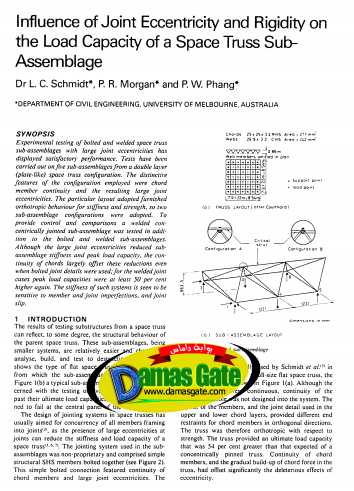Influence of joint eccentricity and rigidity on the load capacity of a space truss sub-assemblage

1 INTRODUCTION
The results of testing substructures from a space truss can reflect, to some degree, the structural behaviour of
the parent space truss. These sub-assemblages, being smaller systems, are relatively easier and cheaper to analyse, build, and test to destruction. Figure I(a) shows the type of flat space truss considered herein from which the sub-assemblages were derived, and Figure I(b) a typical sub-assemblage. This paper is con- cerned with the testing of five such sub-assemblages past their ultimate load capacities, and each was desig- ned to fail at the central panel of the top chord.
The design of jointing systems in space trusses has usually aimed for concurrency of all members framing into joints 13), as the presence of large eccentricities at joints can reduce the stiffness and load capacity of a space trus# ~,~-7). The jointing system used in the sub- assemblages was non-proprietary and comprised simple structural SHS members bolted together (see Figure 2). This simple bolted connection featured continuity of chord members and large joint eccentricities.
Download
http://s18.alxa.net/s18/srvs2/02/001...assemblage.rar